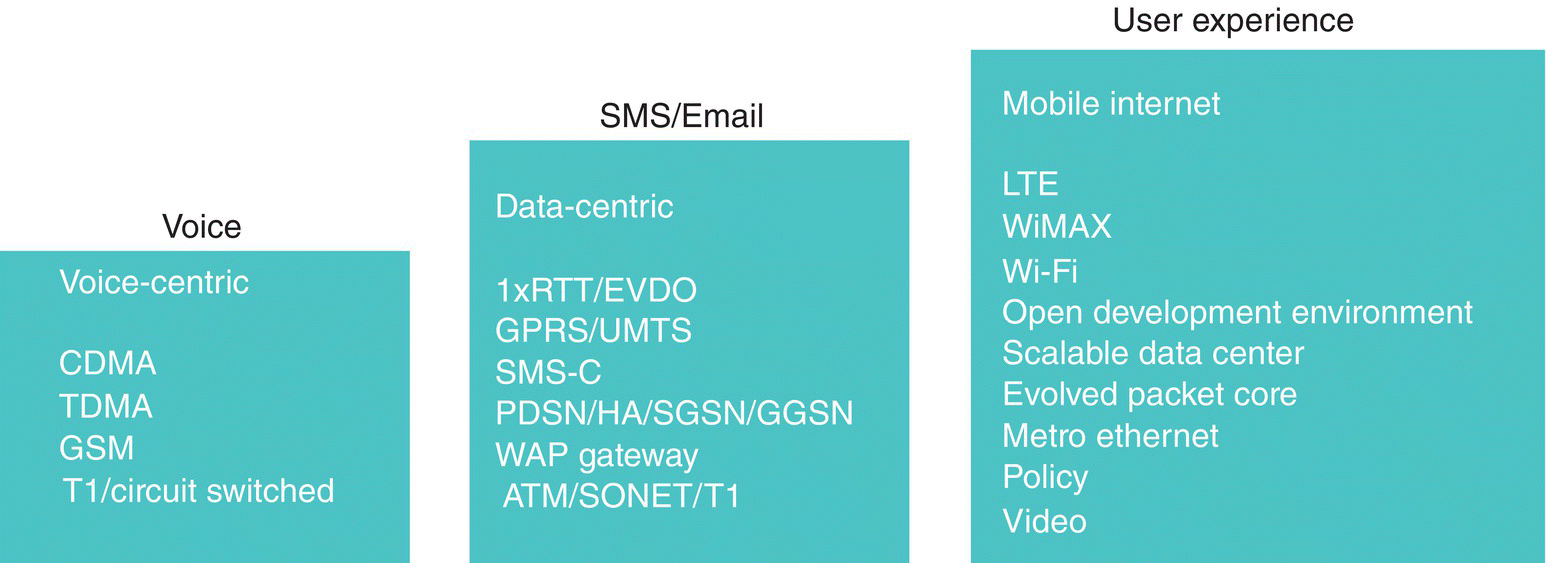2Mobile Network History
Brian Brown, Rob Gonzalez, and Brian Stanford
Cisco Systems, Herndon, VA, USA
2.1 Overview
Few things have changed the way we work, live, and play more than the evolution of mobile networking. In 1990, landlines were the big moneymaker for the service providers (SPs). Little did they know that a massive disruption in the marketplace was going to develop and in the middle would be mobile networking. Since the acceleration of this change through the decades, kids and teenagers today have never seen a pay phone, regularly carry a small computer (smartphone) in their pocket, and are connected close to 24 h a day. As technology continues to evolve, new areas of development are coming to the forefront of the discussion. Virtualization, orchestration, and scalability are now big concerns as more and more applications, data sources, and users around the world discover the possibilities. Network connectivity is critical to provide mobile users the services and experience they are looking for today (Fig. 2.1).

Figure 2.1 Evolution of the mobile industry.
As the demand for mobile services has changed from the beginning of the commercially available GSM in the early 1990s to the evolution to a packet-based architecture in GPRS, to a more robust service in UMTS, and to the more mature designs in LTE and beyond, the supporting core architecture has also changed. In ...
Get Software Defined Mobile Networks (SDMN) now with the O’Reilly learning platform.
O’Reilly members experience books, live events, courses curated by job role, and more from O’Reilly and nearly 200 top publishers.

